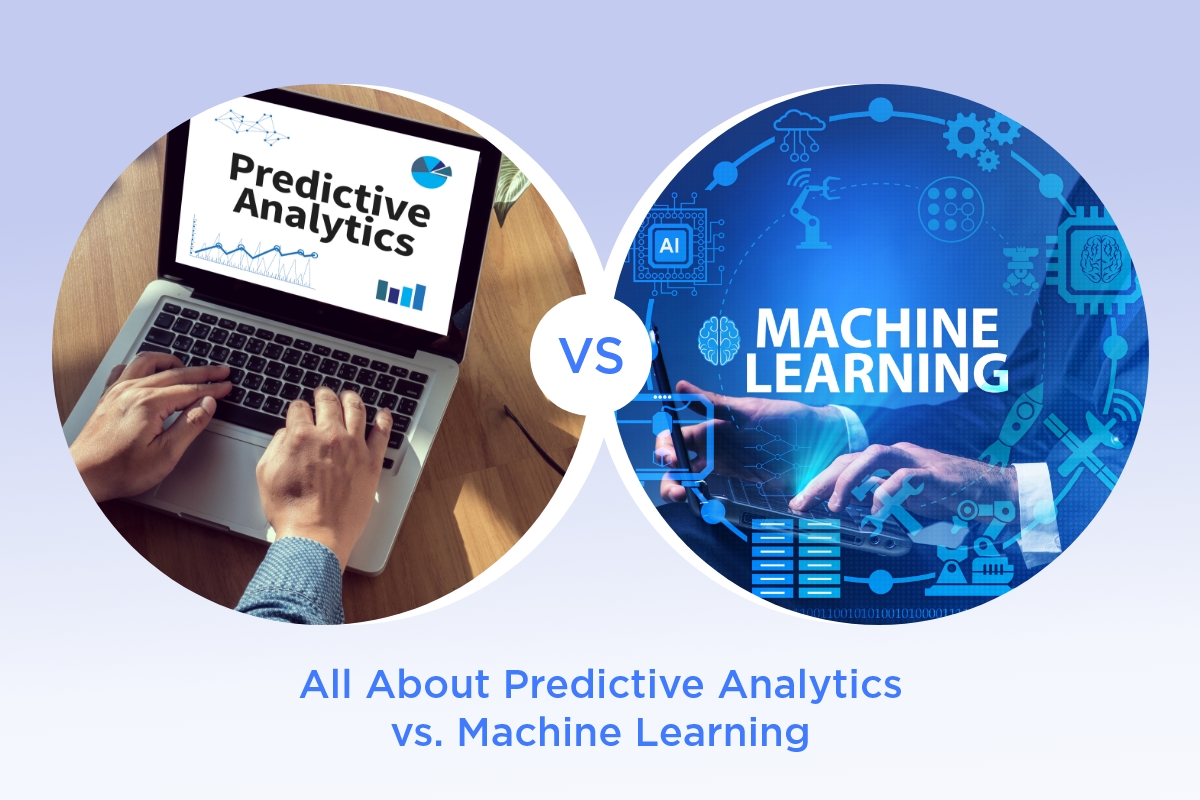The combination of Predictive Analytics and Machine Learning is deadly and a robust way to obtain the maximum value from the data collected by a company. They generate a huge amount of data in their running operations, and both the technologies help them make the most of it. Artificial Intelligence has a lot of subsets, and Predictive Analytics and Machine Learning are two of them.
Today, we will go over these two subsets in detail to know what they have in common or some basic differences between the two. We will also discuss the areas where they are leveraged and why one cannot complement or replace the other.
Table of Contents
Predictive Analytics Definition
Predictive Analytics helps forecast the future based on the data that a company gathered in the past. It allows the user to find some likely patterns and behaviors. The process helps remove the notorious human factor and thus reduce errors to a great extent. Furthermore, it also helps identify some of the most important trends and ideas.
Overall, the term predictive analytics is therefore approached more as an approach and not as a particular technology.
How Does it Work?
Predictive analytics employs a few techniques to make the workflow easy and manageable. Such techniques include advanced statistical modeling and mathematics, descriptive analytics, AI algorithms, and high-volume data mining. Machine learning is required to efficiently and quickly analyze such a large volume of data. You can hire an ML development company to obtain the benefits offered by predictive analytics.
The concept of Predictive analytics is based on prognostication modeling. Both Machine Learning and Predictive Analytics go hand in hand since predictive models usually include algorithms of Machine Learning. The models of ML and PA have several things in common, but the phenomenon is not identical.
Machine Learning Definition
Machine Learning is a tool based on AI that enhances forecasting accuracy without needing additional coding. The machine exercises it by detecting some particular patterns in data clusters. It helps automate predictive modeling by developing training algorithms to find behavior and consistency without specifying the search meaning.
How Does it Work?
Machine learning concepts include neural networks, drilling algorithms, or processing computers to help analyze data. It also helps in obtaining results of the desired scale. Machine Learning usually works by combining a large volume of data with the help of intelligent algorithms and iterations. Furthermore, it allows the software to learn from data functions of patterns.
The ability of machine learning to learn from previous databases and remain flexible to enable them for various applications and not only for predictive modelling.
Predictive Analytics vs. Machine Learning: Similarities
One of the major similarities between the two technologies is machine learning and predictive analytics, which can be referred to as a reference to the past to unleash the future. The approaches, significance, and functions involved in the process are somewhat different.
There are some other criteria as well, which include;
- Analyzing the patterns to determine the future results.
- The use of an extensive data array with which a person cannot cope.
- Applying the concept in the same business sectors like finance, retail, security, medicine, etc.
Even if Machine Learning and Predictive Analytics are presented as related areas of AI, the differences between the two are comparatively more.
Predictive Analytics vs. Machine Learning: Difference
The concepts are quite different, and they are completely different categories even if generalized as the concepts of AI. Machine Learning works with a vast amount of data and complex algorithms. On the contrary, predictive analytics is more specific research and cannot be referred to as a technology that was in existence long before Machine Learning. Machine Learning just made Predictive Analytics more accurate and efficient.
Machine Learning has helped catalyze the progress of the predictive analytics field. On the contrary, predictive analytics is an application of Machine Learning. Predictive analytics can solve a particular problem, so be rest assured that Machine Learning can do it too.
Predictive Analytics vs. Machine Learning: When to use
Predictive analytics help detect behavioral factors’ trends across several sites to customize the email advertising messages. Information is collected in impressive sets in numerous ways, not just online. It can include store applications, sensors in retail outlets, completed questionnaires on emails or social networks, etc. All of these add up to the idea of logistics, sales forecasting and customer experience management.
Predictive analytics, on the contrary, works with people as well as mechanisms. For instance, it can help identify buyers’ behavior and certain diseases’ growth among specific groups of people. It can also identify the employees of your company who are thinking of dismissal, etc. Using the concept of machine learning, predictive analytics can work with historical data and current data.
Conclusion
Machine Learning is a tool, whereas Predictive Analytics is a role equipped with tools, and one of such tools is Machine Learning. Both the concepts interact with each other. You can hire machine learning developers to obtain the benefits of both ML and predictive analytics. To obtain the maximum benefits of Machine Learning and Predictive Analytics, organizations should ensure that they have the architecture to support both solutions. They should be unified, centralized, and in a consistent format.
Additionally, an organization should know the problem they have to solve since it will help them determine the most applicable and best model they can use. Choose professionals to get all your tasks done using best practices.










